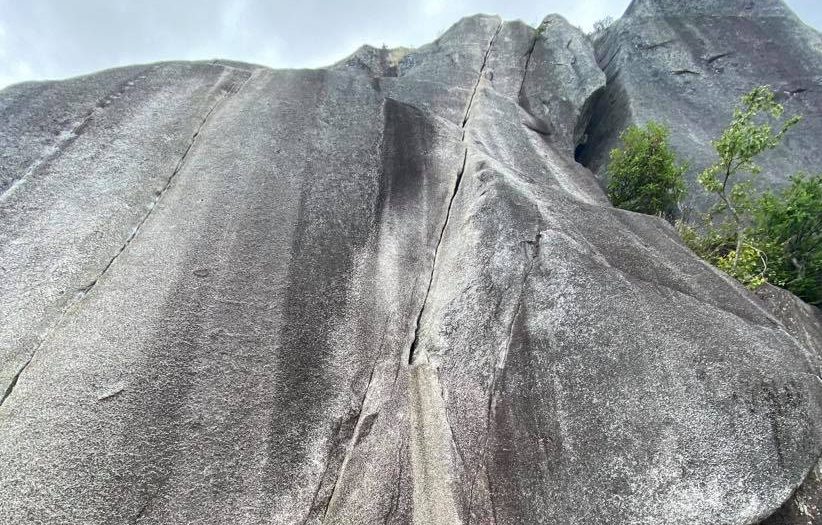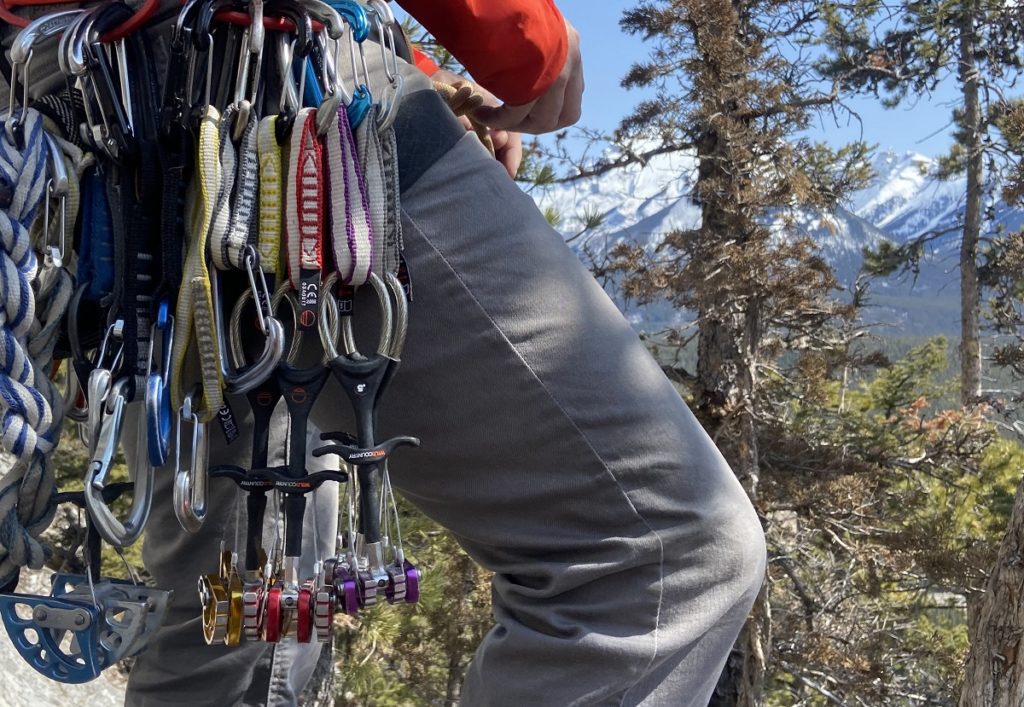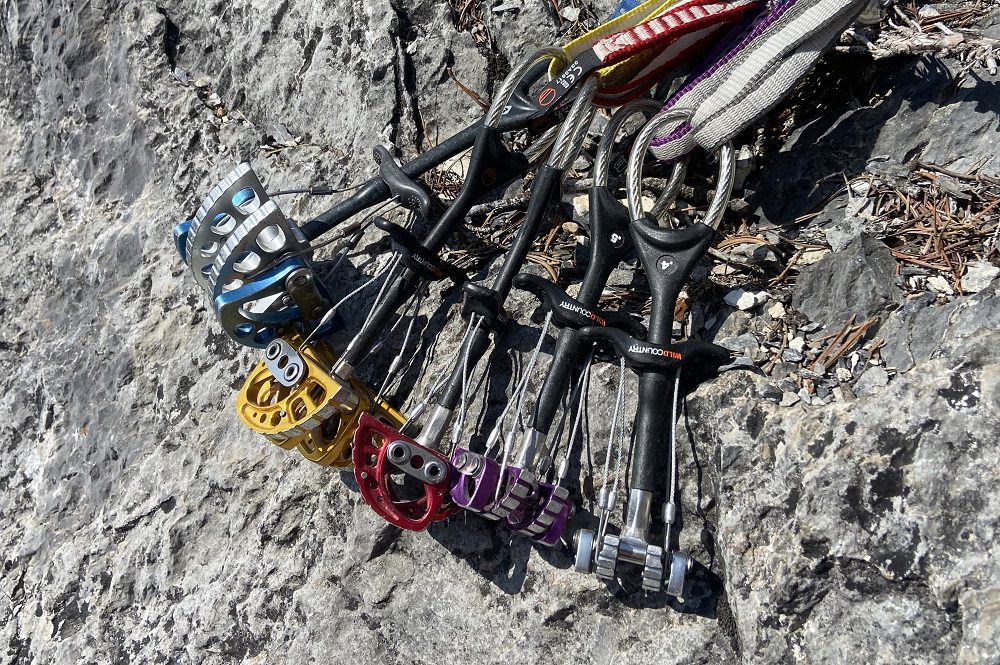Starting to Trad Climb? Here’s How to Rack Gear
Keeping your gear organized on your harness will make finding the right piece of protection easier

Trad climbing is an important skill for rock climbers to have if they’re going to explore routes that aren’t fully protected with fixed gear. Knowing what gear to rack and how to rack it can create a more efficient experience when starting out. If you’re new to trad climbing, then you want to purchase the most common sized cams and nuts to build a “go anywhere” rack. Having your first rack be versatile will give you more options at the crag. Avoid the super small and big gear and stick with the medium sized.
You want to start with a set of nuts, which is around eight to 12, and for cams, anywhere from six to 10. Cams are more expensive than nuts, so start with the most-used sizes which range from half-inch to three inches. Over time, you can double-up on sizes or add smaller and larger pieces.
You can use your sport climbing quickdraws, but most trad climbers will have a separate trad rack of draws made up of single-length and double-length slings with two carabiners. These extendable quickdraws will help manage rope drag on meandering pitches. You’ll also want four locking carabiners and a few metres of cordellete (or webbing) to build anchors. Last but not least, buy a nut tool – they’ll help when retrieving nuts and can help fish out stuck cams.

You’ll likely be combining racks with your climbing partner, so personalise your gear with fingernail polish or coloured tape. This will help when sorting gear at the end of the day.
Old school trad climbers like to rack their gear on a sling around their chest, but most modern trad climbers will rack trad gear on their harness, so be sure to have a harness with enough gear slings to handle the trad gear and quickdraws.
Most trad climbers will rack the smallest pieces toward the front of the harness and increase the sizes towards the rear. Start with a set of nuts (all grouped on one or two carabiners) clipped at the front of the front gear loops and then clip your cams in order of size. Keep the racking consistent with the gates facing in or out, depending on your preference.
When you’re placing a cam, you don’t want to be wasting time trying to separate them, so each one should get its own carabiner. You can add two same-sized cams to the same carabiner, but this will create some messing around because you’ll have to unclip one of the cams once the other is placed to return to your harness.

Every climber has their personal preference with how to rack trad gear, so figure out what works best for you. Experiment with using a gear sling around your chest for when you have more than one rack. Some people like to have their quickdraws on a chest sling and their trad gear on their harness.
Trad climbing can be dangerous, so learn the skills from a professional guide or an experienced climber that you trust. Communicate with your partner how you prefer to rack your gear and go over gear transfers at belays on multi-pitch climbs.


